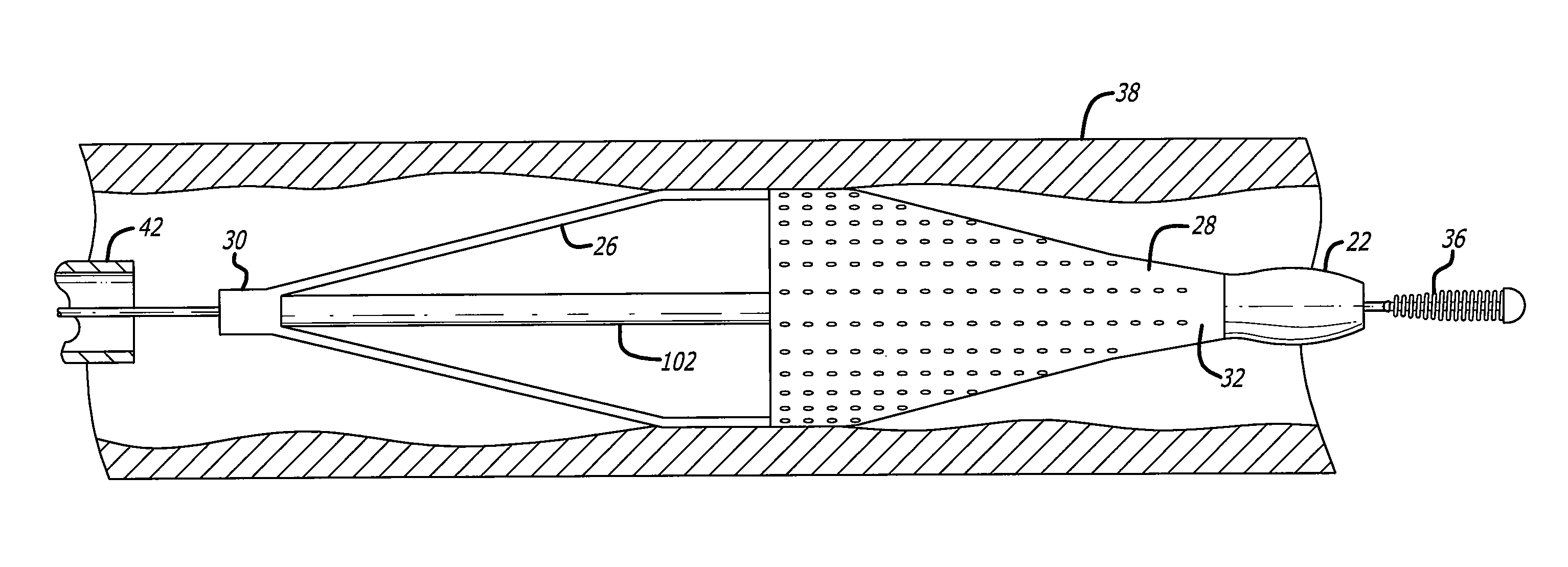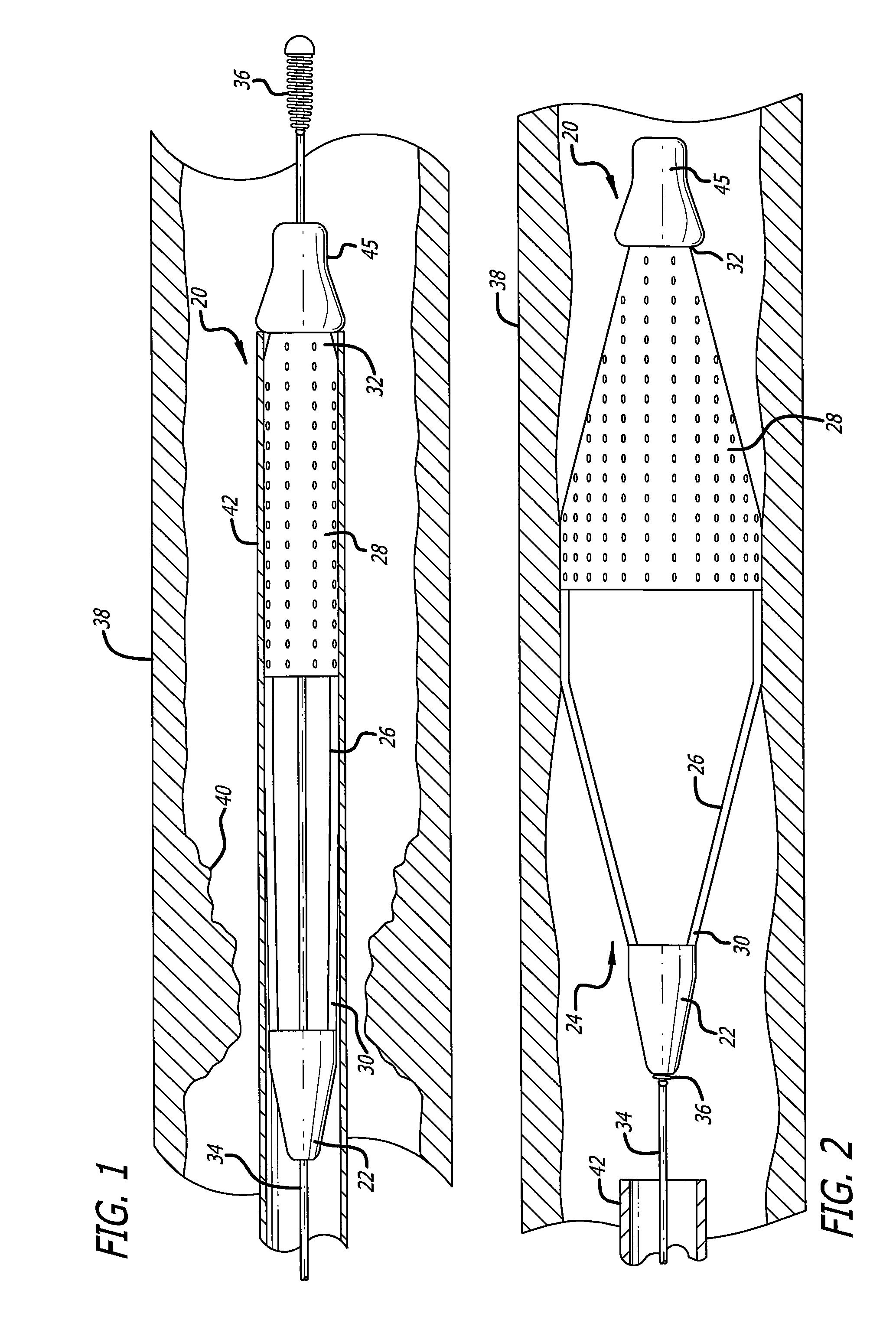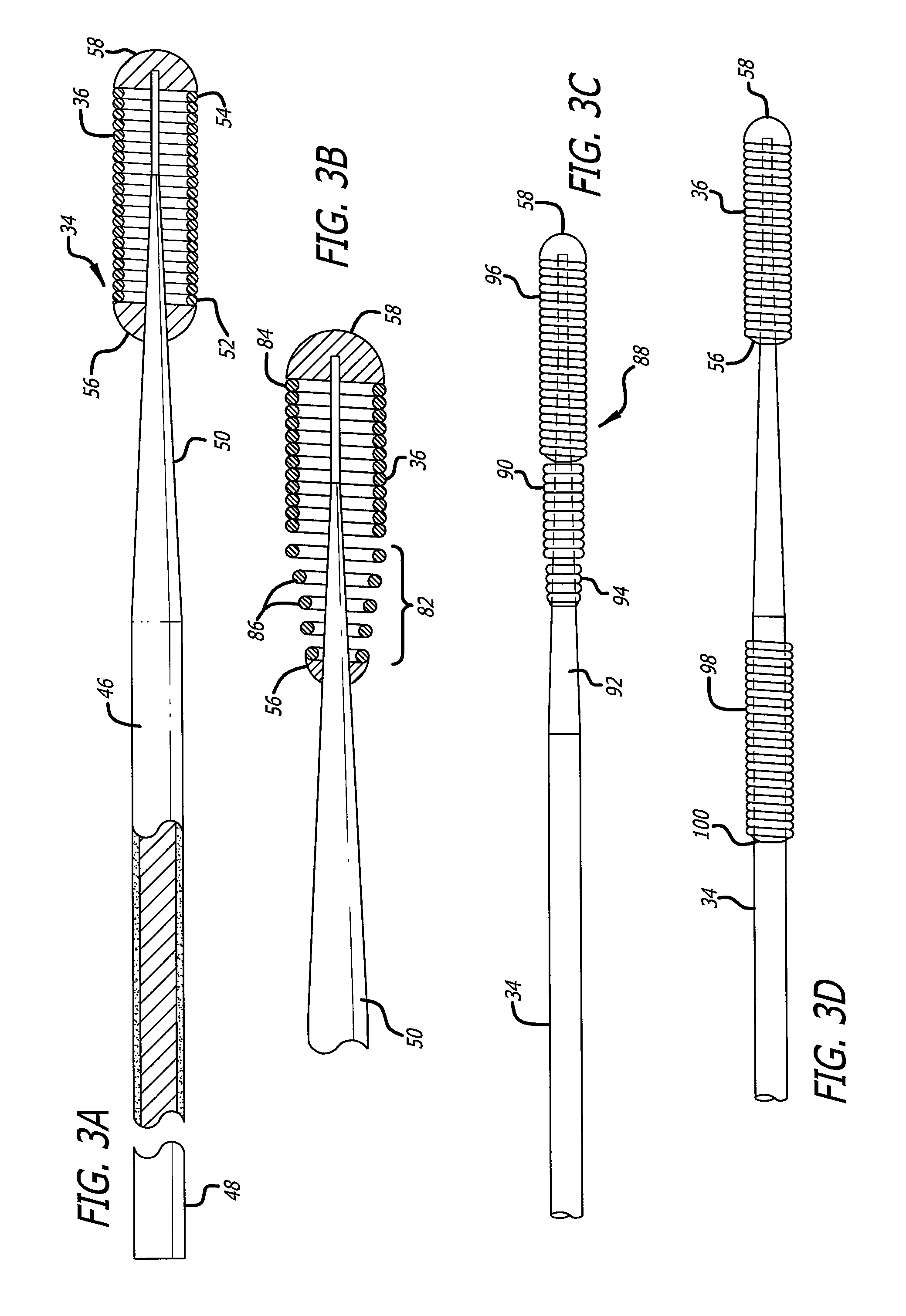Component for delivering and locking a medical device to a guide wire
a technology of guide wires and medical devices, applied in the direction of guide wires, dilators, surgery, etc., can solve the problems of significant health problems of patients, emboli release into the circulatory system can be extremely dangerous and sometimes fatal to patients, and achieve the effect of reducing the overall profile of the delivery system and minimizing possible trauma
- Summary
- Abstract
- Description
- Claims
- Application Information
AI Technical Summary
Benefits of technology
Problems solved by technology
Method used
Image
Examples
Embodiment Construction
[0039]The present invention relates to a locking component used to deliver and lock a medical device along a pre-deployed guide wire. For the sake of illustration, the following exemplary embodiments are directed to locking components which are attached to embolic filtering devices, although it is understood that the present invention is applicable for use with other medical devices that can be delivered in over-the-wire fashion and locked to a guide wire that has been pre-deployed in a body lumen, such as an artery, vein and other body vessel. By altering the size of the components, the present invention can be suitable for coronary, peripheral and neurological applications. It is to be understood that the present invention is not limited by the embodiments described therein.
[0040]Turning now to the drawings, in which like reference numerals represent like or corresponding elements in the drawings, FIGS. 1 and 2 illustrate one particular embodiment of an embolic filtering device 20...
PUM
 Login to View More
Login to View More Abstract
Description
Claims
Application Information
 Login to View More
Login to View More - R&D
- Intellectual Property
- Life Sciences
- Materials
- Tech Scout
- Unparalleled Data Quality
- Higher Quality Content
- 60% Fewer Hallucinations
Browse by: Latest US Patents, China's latest patents, Technical Efficacy Thesaurus, Application Domain, Technology Topic, Popular Technical Reports.
© 2025 PatSnap. All rights reserved.Legal|Privacy policy|Modern Slavery Act Transparency Statement|Sitemap|About US| Contact US: help@patsnap.com



